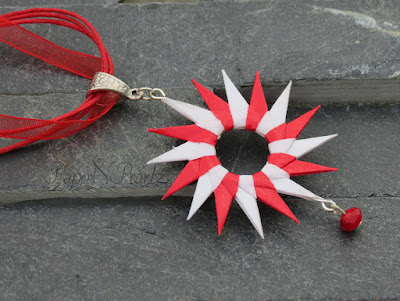This origami star, designed by Enrica Dray, is a modular star made from 8 modules. It is really simple to fold and beautiful and elegant when completed. The star has a slight 3-D effect, since the top layer does not lie flat against the lower layer. The back of the star (Second pic), I thought, was as beautiful as the front!
2 contrasting colours work best for this model. Since I have a very bad eye for colour selection, I used the net to find out 2-colour combinations and liked the black-beige yellow the best. Origami 60 gsm paper, 3 inch squares, 4 of black and 4 of beige yellow, resulted in a star about 4 inches across.
Previously, I have folded the Mina Kusudama, also designed by Enrica Dray. Like the star, the mina kusudama was also easy to fold and assemble. It is of course, made from 30 modules, so it is more time-consuming than the star, but equally satisfying to work on.
Model Details:
Model: Star
Creator: Enrica Dray
Difficulty Level: Low Intermediate
Paper Ratio: Square
Paper Size: 3 inch squares
Model Size: ~4 inches across
Modules: 8
Tutorial: Youtube





































